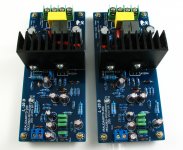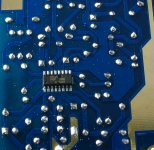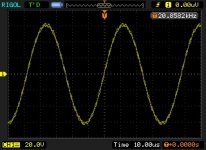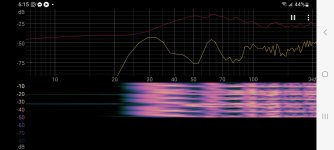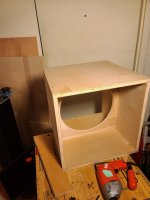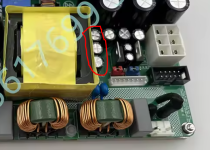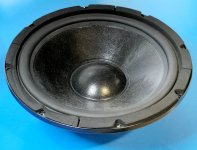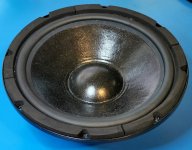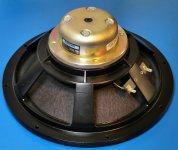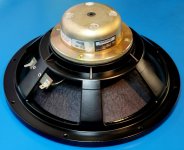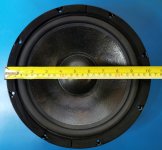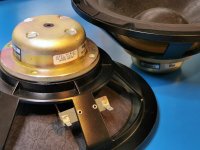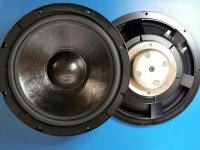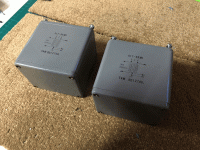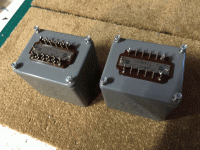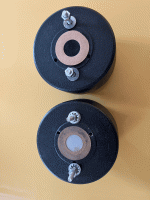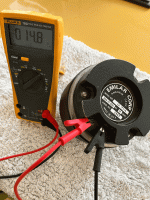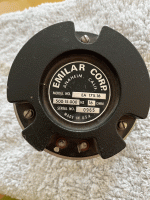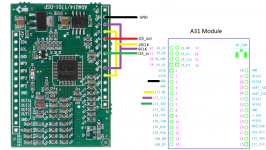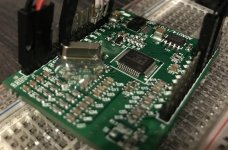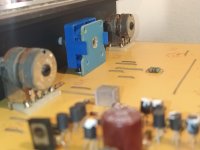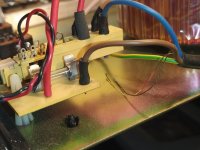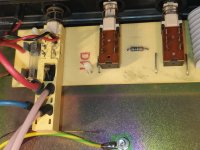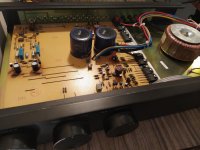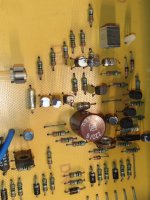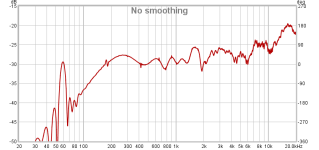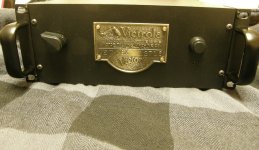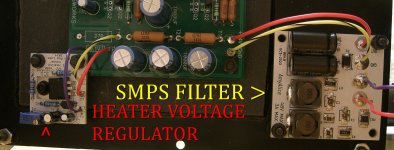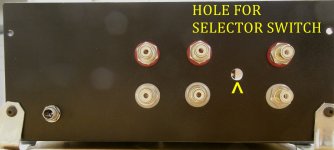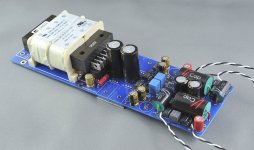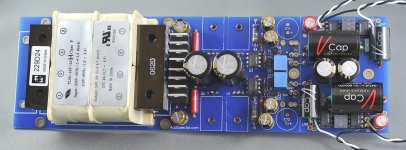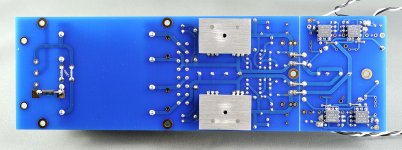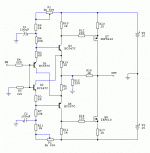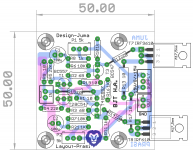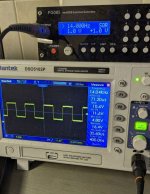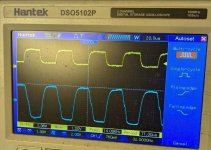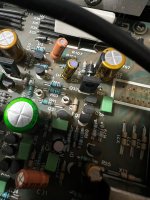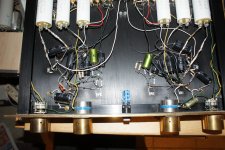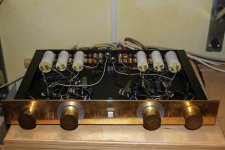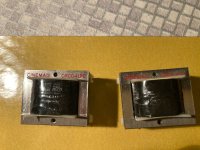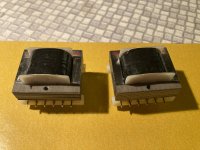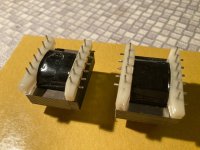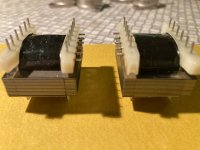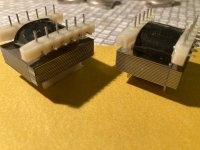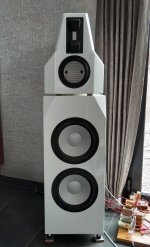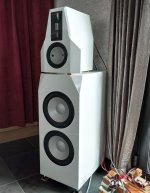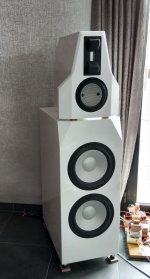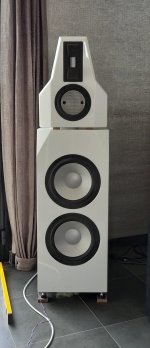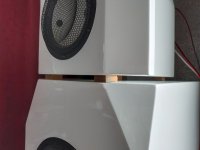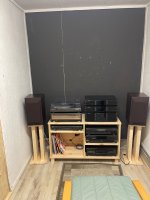I am reaching out for comments and suggestions regarding the PFFB and the TPA3245 configurations. The goal is to create a hybrid amplifier with tube input stages and a power amplifier stage using the TPA3245 with PFFB. Further assumptions include an 8-ohm load impedance. I am not interested in a race for output power, as, in practice, achieving peak power on the order of 10W is practically impossible since it can become too loud for others two floors up or down, often resulting in a police visit. Please do not comment on this, it is simply the reality. Playing with a maximum power of 10-15W is more than sufficient for an average apartment with speakers that have an efficiency of around 90-91 dB/W.
Returning to substance, I have already explained why the TPA3245 is sufficient (the TPA3244 would also be enough, but the powerpad facing down complicates things for an amateur hobbyist) and why I have chosen 8-ohm impedance. I will inform you about the tube stages, with the first being a regular RC stage and the second being an inverter with split load. Following that, there will be voltage followers using operational amplifiers, which unfortunately is due to the desire to implement PFFB. The driving impedances for the power stage must be very low and, ideally, identical. This is not achievable for tubes without using large tetrode/pentode tubes, which, in my opinion, defeats the purpose.
The choice of tube type is quite straightforward and obvious — subminiature double triodes 6N28B-V from Soviet Union, which perform excellently at low voltages. They are more readily available than Soviet nuvistors 6S63N. Regarding both types of tubes, due to having a curve tracer, I have characteristics in the interesting range of voltages and currents along with matched SPICE models. The gain of the tube stage should have a reserve of 8-10 dB to meet consumer standard requirements - around 320 mV rms. Again, please do not comment on this, I have signal sources that only provide audio signal at that level. Adding a switchable attenuator to the amplifier input is not a problem, so around 100-150 mV rms and 600-800 mV rms. As mentioned, there should be some headroom since the audio material does not always reach an average level of -6 dB (which is catastrophic), and the tube wears out over time.
Now, another aspect is the modulation frequency for the current switches in the TPA3245. Definitely 600 kHz. The higher, the better, since the cut-off frequency of the LC filter at the output can be higher, thus having less effect on the transfer characteristic in the acoustic range. The higher the switching frequency, the more accurately the highest frequencies are reproduced. I am not concerned about efficiency drops; fighting for 2-5% efficiency is pointless. Of course, there is also one argument against raising the switching frequency: the dead time of the current switches. Circuits like the TPA3116 or the newer enhanced TPA3126 allow switching at even 1200 kHz, and I have not observed significant side effects in practice. I assume that the TPA3245 has a more complex PWM modulation scheme. I remind you that the load impedance is 8 ohms; I am even less interested in 4 ohms.
So the first task is to calculate the values of the LC filter components. I took a Q factor of 0.95 as a starting point, meaning a slight "bump" introduced by the filter. In the case of an open output, a resistor of 2200 ohms will be permanently connected to the output. Before the LC filters, I decided to add LC snubbers (10 ohms and 330 pF). The Zobel networks are somewhat "delicate" (1 ohm and 47 nF) because simulations showed, in my opinion, that there is no need for "stronger" ones.
Another assumption is that the passband for a +/- 0.5 dB deviation should not be worse than 10 Hz - 20 kHz. Such a narrow deviation means that after engaging the PFFB loop, the boost just outside the acoustic band cannot exceed 0.5 dB for a resistive load of 8 ohms. The capacitances at the inputs of the TPA3245 can be high since the gain drop of the amplifier inside the loop for the lowest frequencies will generate additional distortions. Limiting the bandwidth from below will occur before the TPA3245 in the tube stage.
A few tests resulted in the values provided in the schematic.
In the rectangle bounded by the dashed line, we have a simplified model of the TPA circuit, with two added capacitances (C21 and C22) limiting the passband, which is necessary since the bandwidth of the circuit enclosed in the PFFB loop significantly affects the resulting frequency characteristic and has a significant impact on ringing visible for rectangular waveforms.
I plotted frequency characteristics for several values limiting the bandwidth of the TPA circuit. The overshoot does not exceed 0.4 dB, which I consider a very good result. Another observation is that the overshoot varies, reaching a maximum, and then decreases as the bandwidth of the TPA circuit narrows.
Green, blue, red, cyan, purple, gray => C1 and C22 values: 0.1 pF, 1pF, 5pF, 8pF, 12pF and 20pF.
The next step is to calculate the attenuation of the carrier frequency. I achieved a result better than 32 dB for 600 kHz (34 dB). For full output power of 35W, this means that with such attenuation, the power dissipated on the load is less than 15 mW.
Now, regarding the rectangular waveform. I assumed very steep rise times of 100 ns. For 8 ohms, the simulation results are excellent.
Green, blue, red, cyan => C1 and C22 values: 0.1 pF, 1pF, 5pF, 12pF.
Now for the 2200 ohm load - no connected speakers.
Green, blue, red => C1 and C22 values: 0.5 pF, 5pF, 12pF.
Up to a certain point, it looks good with negligible ringing, but beyond a certain threshold, unfortunately, we move to persistent oscillations. The same is true for the suggested values of the PFFB loop components provided by TI. Analyzing the PFFB publication for TPA3244/45/50/51/55 leads me to conclude that the capacitance introduced into the simplified TPA model in my simulations does not exceed 10 pF.
Now, returning to the passband, for this range, the passband with a 3dB drop ranges from 80 to 90 kHz with a broader bandwidth of the TPA circuit than what results from the 10 pF capacitance. I remind you that for a 0.5 dB drop, we have a passband above 30 kHz. Is 80 - 90 kHz bad? No, it’s very good considering that the drop at the upper end of the passband is significantly faster than 6 dB/oct. Let's be honest; how many people, mainly men over 40, can hear 15 kHz? I bet for a significant majority, 10 kHz is a challenge.
Finally, I will revert to the tube stage. The operating point of the 6N28B-V tubes at a power supply voltage of 52-55 V can be set so that for the second harmonic, the distortion level is in the range of -40 to -50 dB, and for the third harmonic, it is 20-26 dB lower. The remaining higher harmonics should be at least 36 dB lower than the second harmonic.
I also want to criticize the race for the THD+N value. In reality, it is a race just for the noise level. Let's look realistically at listening with speakers. The background noise level during the day in an apartment does not drop below 40 dB (away from a busy street). 30 dB is realistically at night, it might drop to 25 dB. Below 20 dB, there is no chance. The SNR value means that if we add that to the background level, we are almost at the pain threshold. Moreover, let’s also consider how recordings are made.
That’s all for now. I would like to request some substantive feedback regarding the schematic and the simulation results.
Regarding implementation, ceramic capacitors will be C0G, then U2J, and finally X7R outside the audio path. Decoupling the power supply pins of the output bridge in the TPA circuit will consist of two 4.7 nF C0G capacitors plus one 1uF X7R capacitor. Further from the IC, there will be two polymer capacitors of 680u. A bit further, closer to the power supply, there will be two 330-470 uF polymer capacitors. The snubber will use a C0G capacitor, the Zobel network will employ the defined values, and the LC filter will utilize MKP capacitors. The tolerance for ceramic and film capacitors will be 5%. Coupling capacitors in the tube stage will be MKS. Any ceramic capacitors limiting the upper bandwidth will be C0G. All resistors in the audio path will be MELF 1%. Standard thick film SMD resistors are only defining the operating mode of the TPA and used in the converters. The output filter coils are Coilcraft UA8013-AL (this is a critical component and should not be skimped on).
THT components will be the polymer capacitors because the SMD electrolytic capacitor housings are unfortunately not very durable. Additionally, these MKP and MKS components will be THT as well as the tubes, potentiometer, and power-on relay. This relay is necessary because the switching power supply that will power the amplifier will be an external device. This is the best approach, as bringing the power supply wires into the housing along with a huge mess of interference (inverters in renewable energy installations, inverters in household appliances) is something better avoided.
As for this relay, a high-inrush industrial relay rated for 20 - 24 A won't work because welding of contacts is guaranteed in DC circuits with low ESR capacitors like polymer ones. I use pre-make tungsten relays where a contact rated for 16A can handle an average current of 800A for 200 us. They are not particularly expensive and can still be easily purchased (but may disappear as they were mainly used to switch prohibited light sources like fluorescent lamps, sodium, mercury, or metal halide lamps).
The PCB will be a double-sided FR4 laminate with a copper thickness of 70 um, dedicated to the TPA3245 evaluation board heatsink. The cost is significant; since the components alone will exceed USD 700 for a single board ordered from a reputable company (e.g., Eurocircuits and not from China, since you need to order 10-20 to weed out defects and select a properly manufactured one, and they can also add extra VAT and customs duties in my country), that results in about USD 150.Additionally, there will be a housing plus all this "jewelry" of speaker terminals, knobs, etc. This cost can be criticized, I understand, but if I wanted something cheap, I would buy a cheap product from Aliexpress. Therefore, I do not skimp, and instead of ordinary aluminum capacitors, there will be polymer ones in the audio path.



